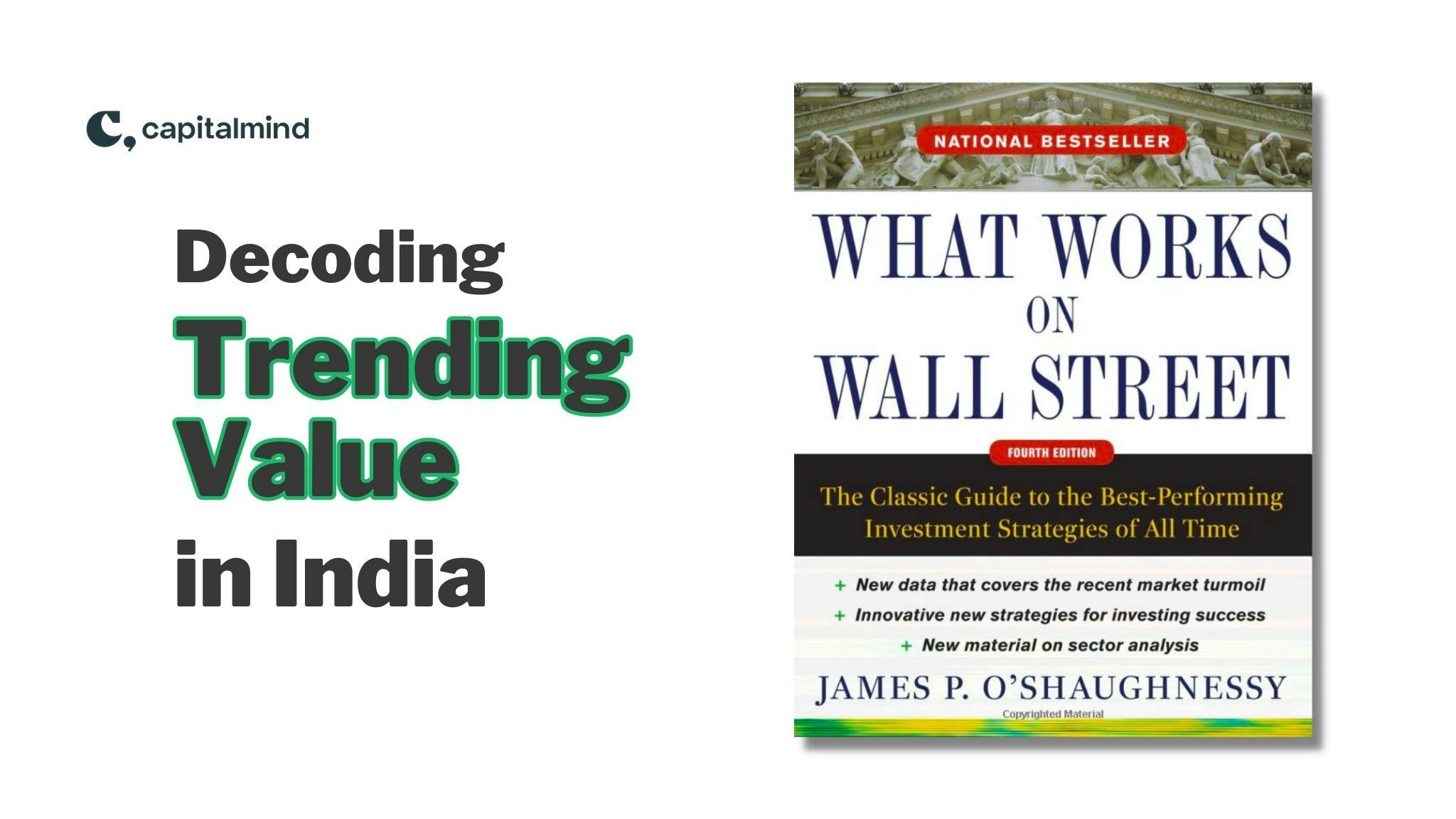(category)General
The Halo Effect: How success blinds us in Business and InvestingThe Halo Effect: How success blinds us in Business and Investing
The Halo Effect is a cognitive bias that influences how we perceive successful companies and make investment decisions. In this article, we explore real-world examples from Lego and Byju's to illustrate the two faces of the Halo Effect and its impact on business narratives. Discover the lessons investors can learn from these cases and how to make more balanced decisions in the face of the Halo Effect. Gain insights from "The Halo Effect and Other Business Delusions" by Phil Rosenzweig, a must-read book for investors looking to navigate the complexities of business success and failure.
Anoop Vijaykumar•

The Halo Effect and Other Business Delusions by Phil Rosenzweig is a seriously underrated book for investors. With < 500 ratings on amazon, I mean that literally.
The real-world examples challenge how we think about success in business and, by extension, investing.
Lego “straying from its core”
The legendary Danish company, one of the world’s leading toymakers famous for its interlocking plastic blocks, has a 2023 revenue of $9.65B. It is one of the world’s most durable and successful companies, but not without its challenges.
In 2004 it had just come through a difficult year, with sales down 25% over the previous year. The COO, Paul Plougmann, was let go, and the CEO, Kjeld Kirk Kristiansen, grandson of the founder, explained that Lego had “strayed too far from its roots and relied too heavily on merchandising spin-offs like Harry Potter figures.”. Financial media echoed his thoughts, saying that Lego's big blunder was straying from its core.
However, just six years before that, in 1998, Lego had posted its first-ever loss. They brought in Plougmann from Bang & Olufsen to help reignite growth. Under his guidance, Lego branched out into electronic toys and merchandising spin-offs, which helped reverse the downward trend. If, in 1999, after posting a loss, Lego had said it was sticking to plastic building blocks and refusing to consider merchandising opportunities, what would outside analysts likely say about the company? “the company had become complacent and refused to consider new growth ideas”.
Lost in the 2004 sound and fury about Lego was that the largest US toy maker, Mattel, announced in July 2004 that sales of its best-known product, Barbie, had declined by 13%. Its response was to launch a new merchandising line based on the American Idol TV show. Two leading toymakers saw a sales decline at the same time. One concluded that merchandising spin-offs were bad, while the other extended that same approach.
Yet, the narratives explaining them were crystal clear and never in doubt about the causes.
The Halo Effect
When a company is doing well – its profits are soaring, its products are flying off the shelves, and its stock price is skyrocketing. We attribute this success to brilliant strategy, visionary leadership, and a strong corporate culture. We put a “halo” around the company and everything they do, assuming that they must be doing everything right because they’re successful.
But here’s the catch: we often make the opposite assumption when that same company struggles. Suddenly, their strategy is flawed, their leadership is incompetent, and their culture is toxic. The halo turns into a pitchfork, and we blame all the same factors we previously praised.
The Halo Effect makes us make faulty attributions about what drives business and investment performance. We tend to look for simple, universal formulas for success when it’s often the result of a complex interplay of factors, many of which are outside a company’s control.
Take any company struggling today and the news and analysis about it. Then, do a date-ranged Google search of that same company till just before its publicly reported troubles. Often, the same publication, even the same reporter will have portrayed the company in contrasting ways.
Take Byju’s as a current real-life example of the two sides of the Halo Effect. Today, we know Byju’s as India’s largest-scale startup failure. At one time, it impressed legendary internet business analysts like Mary Meeker.
A sampling over the years to highlight how the 'Halo Effect' plays out in real-time:
Halo Effect as smiling angel
Sep 2017 Forbes India: Byju's: Swipe and learn from this near-unicorn
A detailed piece on the brilliance of its founder, his background as the hardworking “son of school teachers”, his brave decision to start a firm training in cracking a competitive entrance exam, the marquee investors and the commendable level of ambition.
“The valuation of Byju’s has grown because of lack of supply. How many companies are showing this kind of revenue growth and a clear path to profit? It is good quality revenue, predictable and repetitive, almost similar to a software-as-a-service (Saas) business. If Saas companies are getting valued at 10 times their annual run rate, then why not Byju’s?”
June 2020 Forbes India: Indian EdTech Billionaire’s Byju’s Becomes Decacorn After Funding Round From Mary Meeker
“Endorsed by millions of students, Byju’s has emerged as a clear leader in education technology,” said Meeker. “We are excited to support a visionary like Byju and his team in their quest to continue to innovate and shape the future of education.” For Meeker, known for her bets on Facebook, Uber and Airbnb, Byju’s is her first investment in India.”
Sep 2021 scroll.in: How Byju’s became the world’s biggest ed-tech company during the Covid-19 pandemic
“Byju’s seems to be pursuing an inorganic growth strategy keeping an eye on attractive merger and acquisition targets, which it see as a strategic fit for its business expansion plans,” Aurojyoti Bose, lead analyst at GlobalData, told Quartz. “Its acquisition strategy seems to be around remaining competitive, foraying into complementary segments, create better learning products and business expansion. Byju’s has been looking for expansion in India as well as international markets.” What works in Byju’s favour is that it has a solid safety net to continue making big bets. The firm is backed by several marquee global investors like Chan-Zuckerberg Initiative, Sequoia Capital India, Silver Lake, BlackRock, Tiger Global, Tencent, Qatar Investment Authority and more.”
The brilliant founder (Math Olympiad!), opportunity size (education, not just in India, but the world!), the rapid organic growth from just CAT prep moving into K12!, marquee investors to fund global ambitions...
In Dec 2021, Churchill Capital offered to invest $4B to take Byju’s public in the US through a SPAC deal, valuing it at $48 Billion.
Fast-forward barely 28 months from that heady $48B number...
Halo Effect as pitchfork-wielding devil
Feb 2024 Forbes India: Fall of the Titans: How shoddy corporate governance destroys companies
“Two new-age tech companies (one of them Byju's), which set out to revolutionise the country’s financial and education landscape for inclusive growth, met with a disastrous turn of events. The writing was on the wall for some time. But unfettered ambition, greed, and a hint of arrogance blinded the founders, marquee investors, and the board to the imminent fall.”
June 2023 Forbes India: From alarm to alarming to panic: Byju's and its auditing lessons
“The first real warning—call it alarm—came in the form of ‘Wolf Gupta’. It was the post-pandemic era, the world had gone online, and an uncertain offline world was the only certain thing that everybody certainly believed in. It was sometime late in 2020, and the ‘wolf’ was on the prowl. “Thirteen-year-old Wolf Gupta learnt AI to get a $2.3 million job from Google while other kids his age didn’t know what to do after school. Coding makes your kids entrepreneurs and scientists in the new world,” claimed an advertisement by coding startup WhiteHat Jr, which was bought for $300 million by Byju’s.”
A shift in perception was inevitable and well-called for, but when things went south, the same publications that praised Byju’s strategy of big acquisitions and its organic growth rate said, “the writing was on the wall” and “greed and unfettered ambition” to imply it was inevitable that Byju’s would end up where it is today.
Look again at the list of marquee investors and wonder why they didn’t see any of this coming.
Scrolling through newsfeeds, we’ll find several examples of companies at different stages of this cycle.
For investors, the answer is to be sceptical, not cynical.
Watching out for the Halo Effect:
- Don’t be blinded by the hype - well-deserved or not.
- Question simple success stories - brilliant founder, unique culture, unbeatable supply chain...
- Survivorship bias - what is the historical base rate?
- Don’t extrapolate past performance - things can change quickly
- Do your due diligence - seek out contrary opinions
- And despite doing all that, expect to be wrong sometimes - the future is inherently unpredictable, so diversify
Recognising how prevalent the Halo Effect is, during good and bad times, will help us make more balanced investment decisions.
Read 'The Halo Effect' by Phil Rosenzweig
Related Posts
Make your money work as hard as you do.
Talk to a Capitalmind Client AdvisorInvesting is not one size fits all
Learn more about our distinct investment strategies and how they fit into your portfolio.
Learn more about our portfoliosUnlock your wealth potential
Start your journey today



